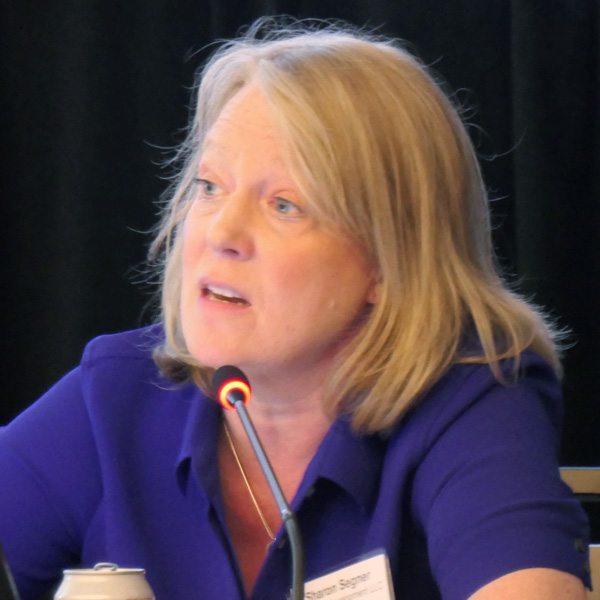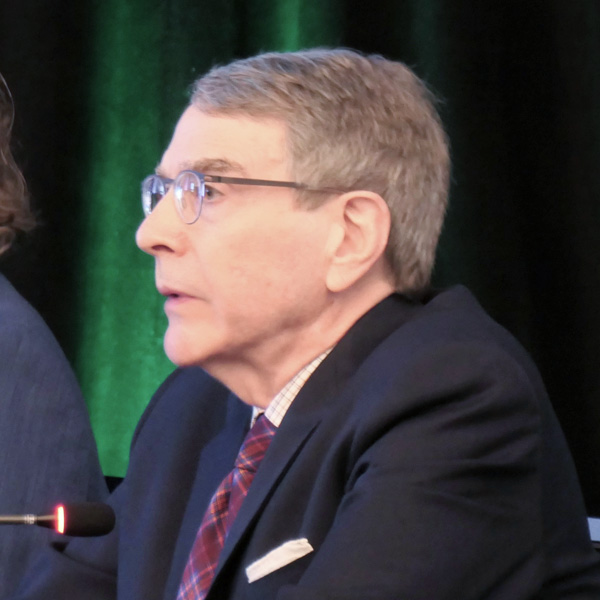The U.S. Supreme Court on June 28 overturned the doctrine of deference to federal agencies in interpreting statutes when issuing rules, ending 40 years of legal precedent and putting into question numerous existing agency rules, including those from FERC.
In a 6-3 decision, with Chief Justice John Roberts writing the majority opinion, the court said that the doctrine, known as Chevron deference after the 1984 case Chevron v. Natural Resources Defense Council, cannot be squared with the Administrative Procedure Act (APA), in which Congress said that the reviewing court — not the administrative agency in a case — is to “decide all relevant questions of law.”
“Chevron cannot be reconciled with the APA by presuming that statutory ambiguities are implicit delegations to agencies,” the court said. “That presumption does not approximate reality. A statutory ambiguity does not necessarily reflect a congressional intent that an agency, as opposed to a court, resolve the resulting interpretive question. Many or perhaps most statutory ambiguities may be unintentional.”
The ruling came in the case of Loper Bright Enterprises v. Raimondo, which dealt with requirements from the Department of Commerce that commercial herring fishers pay for federal employees on their ships to monitor their catch to prevent overfishing. (See Supreme Court Hears Oral Arguments on Overturning Chevron.)
The department’s National Marine Fisheries Service (NMFS) based its rule on the Magnuson-Stevens Fishery Conservation and Management Act of 1976. Loper Bright Enterprises, a New Jersey-based herring fishing company operating off New England, challenged the agency’s authority under the law to issue such a rule, arguing that the statute’s wording was ambiguous.
Under Chevron, if congressional intent in the wording of a law was ambiguous, courts would defer to agencies’ rules as long as they found they had reasonably interpreted Congress’ intent.
While Magnuson-Stevens explicitly authorized fees on industry for federal monitoring of foreign and Pacific Ocean fisheries, it did not do so for those in the Atlantic Ocean. The D.C. Circuit Court of Appeals found in favor of NMFS in 2022 under Chevron.
But the Supreme Court said Chevron’s presumption is misguided because agencies do not have special competence in resolving statutory ambiguities; courts do.
“Even when an ambiguity happens to implicate a technical matter, it does not follow that Congress has taken the power to authoritatively interpret the statute from the courts and given it to the agency,” the court said. “Congress expects courts to handle technical statutory questions, and courts did so without issue in agency cases before Chevron.”
Until Chevron, courts would only defer to agencies’ expertise for “fact-bound determinations” that did not involve statutory interpretation. When the APA was enacted in 1946, Congress specifically said that when agency actions are appealed, “the reviewing court shall decide all relevant questions law,” without any deferential standard for courts to use.
Thus, Chevron requires a court to ignore, not follow, “the reading the court would have reached” had it exercised its independent judgment as required by the APA, the Supreme Court said.
When it comes to deferring to an agency’s technical expertise, Roberts wrote that it does not follow that Congress has taken the power to authoritatively interpret the relevant statute from the courts and given it to the agency. Congress expects courts to handle technical statutory questions.
“Courts, after all, do not decide such questions blindly,” Roberts said. “The parties and amici in such cases are steeped in the subject matter, and reviewing courts have the benefit of their perspectives. In an agency case in particular, the court will go about its task with the agency’s ‘body of experience and informed judgment,’ among other information, at its disposal.”
The court also said that stare decisis is overcome because Chevron has proved fundamentally misguided by reshaping judicial review of agency action without grappling with the APA. “Chevron was a judicial invention that required judges to disregard their statutory duties.”
Justices Clarence Thomas and Neil Gorsuch wrote individual concurring opinions.
Thomas joined the majority’s opinion in full, but he wrote “separately to underscore a more fundamental problem: Chevron deference also violates our Constitution’s separation of powers. … It curbs the judicial power afforded to courts, and simultaneously expands agencies’ executive power beyond constitutional limits.”
“Today, the court places a tombstone on Chevron no one can miss,” Gorsuch wrote. “In doing so, the court returns judges to interpretive rules that have guided federal courts since the nation’s founding.”
Liberal Justices Dissent
Justice Elena Kagan wrote the dissenting opinion, on which she was joined by Justices Sonia Sotomayor and Ketanji Brown Jackson.
Chevron was a “cornerstone of administrative law” for 40 years, Kagan wrote. If Congress’ intent was clear in the law, that was how the court based its decision, and the agency’s view made no difference. The doctrine covered the situations when Congress left an ambiguity or gap in the law.
“The answer Chevron gives is that it should usually be the agency, within the bounds of reasonableness,” Kagan said. “That rule has formed the backdrop against which Congress, courts and agencies — as well as regulated parties and the public — all have operated for decades. It has been applied in thousands of judicial decisions. It has become part of the warp and woof of modern government, supporting regulatory efforts of all kinds — to name a few, keeping air and water clean, food and drugs safe, and financial markets honest.”
Congress cannot write perfectly complete regulatory statutes, Kagan said. “It knows that those statutes will inevitably contain ambiguities that some other actor will have to resolve, and gaps that some other actor will have to fill. And it would usually prefer that actor to be the responsible agency, not a court.”
Agencies have scientific and technical subject matter expertise that courts lack, and some decisions demand a detailed understanding of interdependent regulatory programs that agencies know “inside-out,” Kagan said.
“In one fell swoop, the majority today gives itself exclusive power over every open issue — no matter how expertise-driven or policy-laden — involving the meaning of regulatory law,” Kagan said. “As if it did not have enough on its plate, the majority turns itself into the country’s administrative czar.”
Reactions to the Decision
It is unclear how much the end of Chevron will impact FERC, but at the Energy Bar Association’s meeting in April, the general counsels for the commission and the Department of Energy both argued they would be able to defend their regulations without it. (See Energy Lawyers Debate the Impact of Losing Chevron Deference.)
Republicans and some industry groups welcomed the court’s decision, while Democrats and clean energy groups decried the decision.
“In overruling Chevron, the Trump MAGA Supreme Court has once again sided with powerful special interests and giant corporations against the middle class and American families,” Senate Majority Leader Chuck Schumer (D-N.Y.) said. “Their headlong rush to overturn 40 years of precedent and impose their own radical views is appalling.”
Minority Leader Mitch McConnell (R-Ky.) said the decision makes clear that no federal agency can co-opt Congress’ authority to make the law.
“Congress’ willingness to outsource legislative responsibilities to the most unaccountable corners of the executive branch weakened both its own Article I powers and the link between the American people and a responsive federal government,” McConnell said. “The days of federal agencies filling in the legislative blanks are rightly over.”
U.S. Chamber of Commerce CEO Suzanne Clark said that the decision will help create a more predictable and stable regulatory environment.
“The Supreme Court’s previous deference rule allowed each new presidential administration to advance their political agendas through flip-flopping regulations and not provide consistent rules of the road for businesses to navigate, plan and invest in the future,” Clark said. “The Chamber will continue to urge courts to faithfully interpret statutes that govern federal agencies and to ensure federal agencies act in a reasonable and lawful manner.”
Advanced Energy United CEO Heather O’Neill argued just the opposite, saying it was incumbent on Congress to ensure the decision does not undo decades of progress in the energy transition.
“While the march to clean energy will continue, today’s Supreme Court decision to radically overturn 40 years of judicial precedent is a blow for effective and efficient government,” she said. “Technology and regulation go hand-in-hand in making America a prosperous, safe and clean place in which to live. Overturning the so-called Chevron doctrine will invite chaos, inefficiency and added cost to everyday people.”
White House Press Secretary Karine Jean-Pierre said the ruling is “another deeply troubling decision that takes our country backwards.”
President Joe Biden “has directed his legal team to work with the Department of Justice and other agency counsel to review today’s decision carefully and ensure that our administration is doing everything we can to continue to deploy the extraordinary expertise of the federal workforce to keep Americans safe and ensure communities thrive and prosper,” she said.

